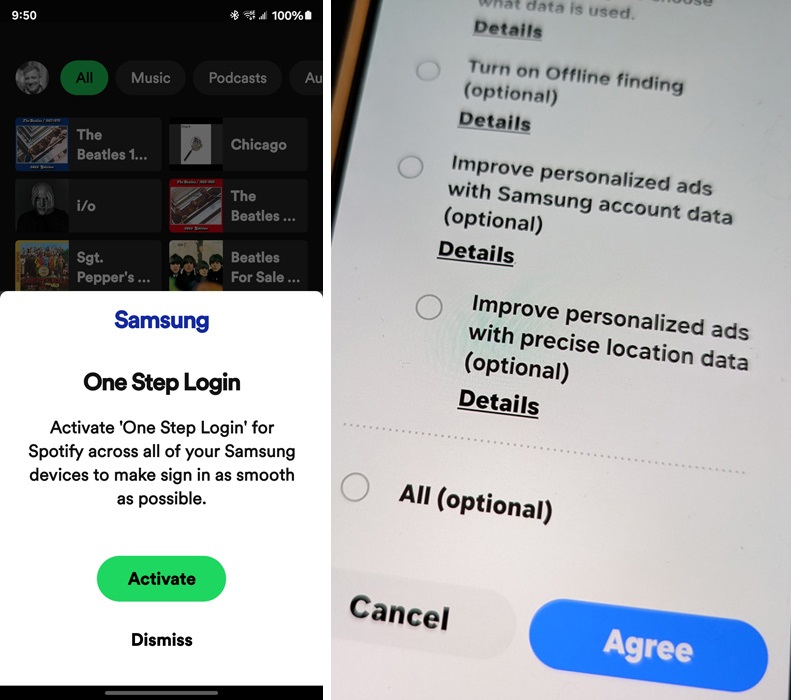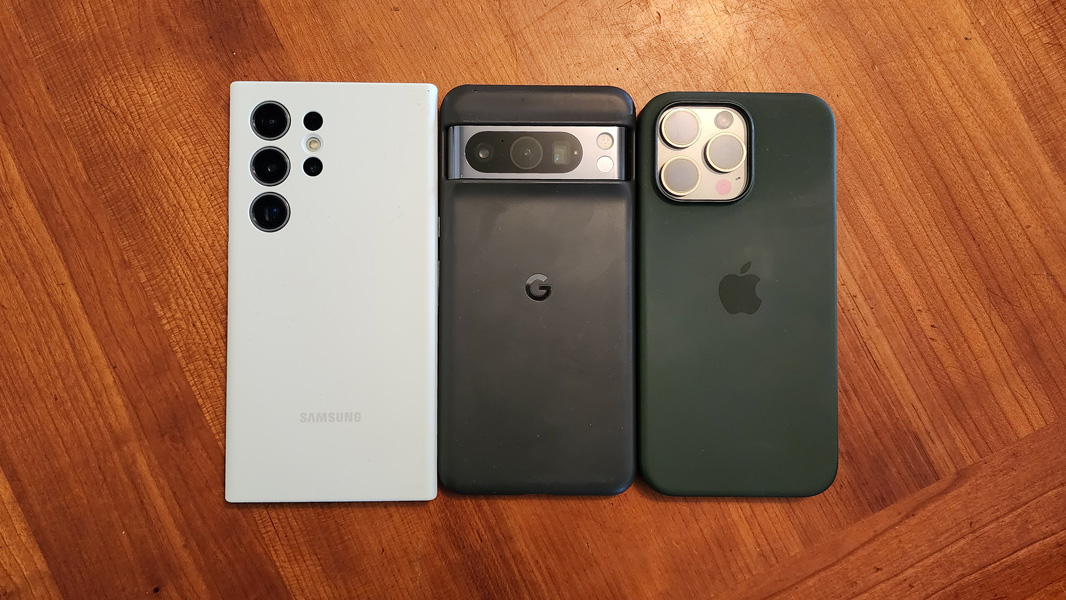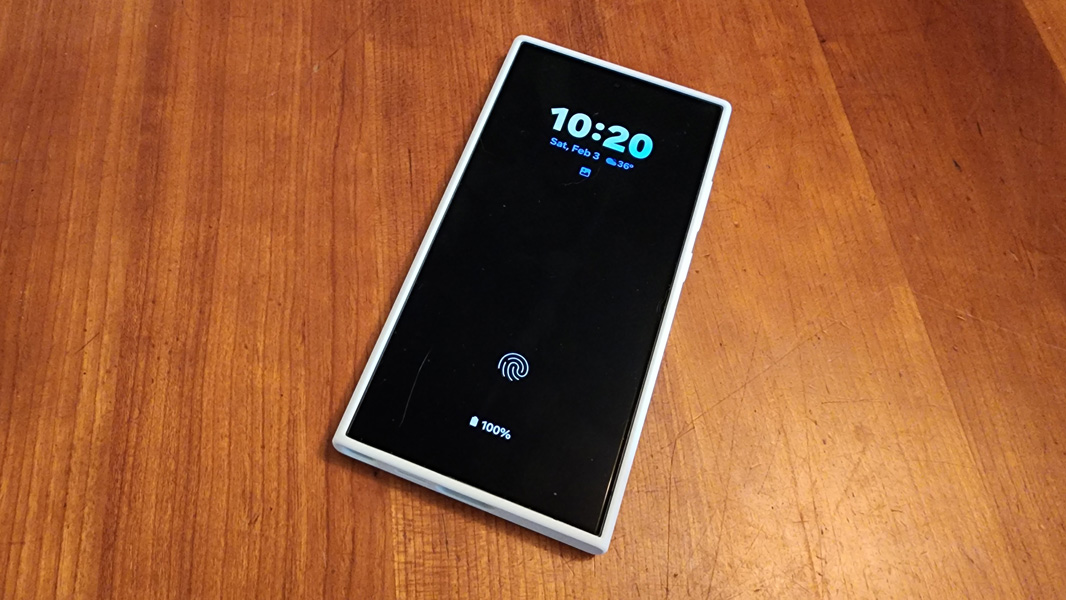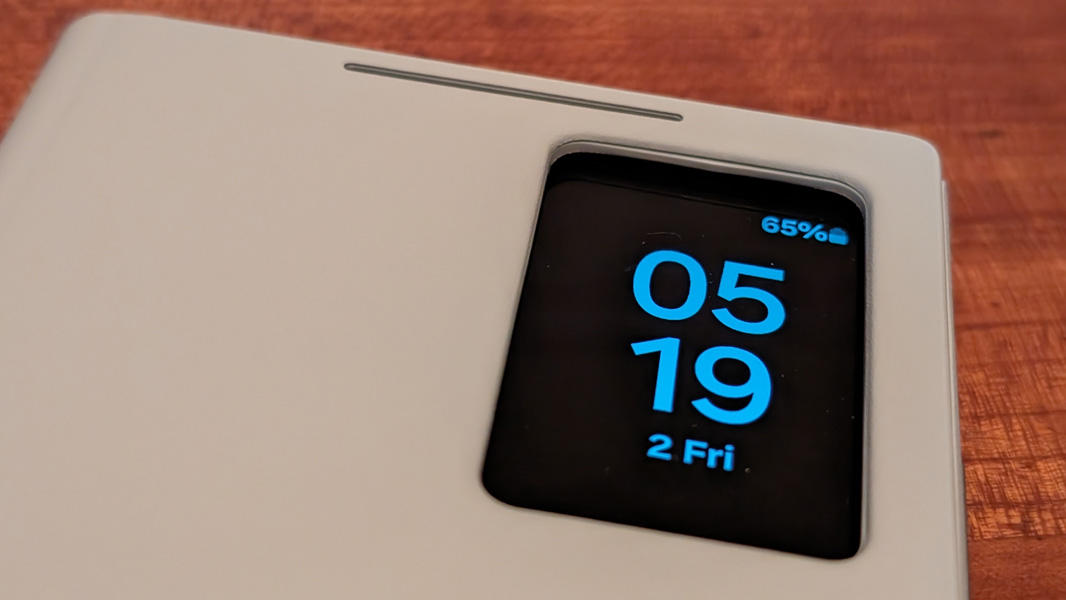A Few More Thoughts About the Samsung Galaxy S24 Ultra
- Paul Thurrott
- Feb 03, 2024
-
21

I debated whether I should bother switching over completely to the Galaxy S24 Ultra, knowing I could simply use it with a Nomad eSIM or local telco SIM card while we were away. Normally, this isn’t even a question, but there’s something comfortable and appealing about the Pixel 8 Pro I’ve been using since early November, and the long-time issues I’ve had with Samsung are all over this device.
But in the end, I did the right thing and moved my Google Fi eSIM to the S24 Ultra. Unlike the horrible, time-consuming experiences I had doing this previously with T-Mobile, this change took just a minute and was seamless and error-free.
Windows Intelligence In Your Inbox
Sign up for our new free newsletter to get three time-saving tips each Friday — and get free copies of Paul Thurrott's Windows 11 and Windows 10 Field Guides (normally $9.99) as a special welcome gift!
"*" indicates required fields
I wish everything worked that well.
Getting my Pixel Watch 2 synced to the S24 Ultra was dramatically less seamless. After failing to connect with the Pixel Watch app I installed on the Samsung, I finally Googled it, and it turns out you need to transfer the Pixel Watch to a new phone from within the settings app on the watch. That should have worked well, but this is Google, so it failed 7 or 8 times before it finally, magically, connected. And then the Watch reported that it was unconnected, while I could use the app to change the face on the wearable. On and on it went. I’m still not sure if it’s right.
Documenting the amount of crap that Samsung adds to the Android phone experience would be tedious and painful, but for now, I’ll offer up these two typical examples, with the understanding that Samsung is constantly getting in my face and there’ll be more to come.

Moving on.
I try not to read other reviews of products I’m currently evaluating, but I’m so unfamiliar with the whole Samsung thing that I’ve felt obligated to see what others are saying so that I can level-set my expectations.
Boy, was that a mistake.
Again and again, I find myself disagreeing, and repeatedly, with these reviews. And rather than rant about individual reviews or their authors, I’ll just list a few of the issues as I see them, the nonsensical complaints that I see repeated again and again and again.
It’s too damn big.
This is perhaps the most common complaint but it’s a red herring, a throw-away “non mot” for the “cons” column in the review summary. Yes, the S24 Ultra is a big phone. But that’s by design, in part because the built-in S Pen works best on a larger display, and in part because—wait for it—some customers want the biggest phone they can get. I’m among them: In fact, I wish it was bigger. This is an observation I’ve been making repeatedly since I moved to the Pixel 8 Pro. Which looks smaller than the S24 Ultra but is roughly the same size.

And I am awarding bonus points to the reviewers who felt the need to point out that the next step-up in size from this phone is a tablet. Sorry, folks, but the Galaxy S24 Ultra is a phone and its display is most similar in size to other phones. Comparing it to a tablet doesn’t just grossly overstate the phone’s size, it’s like suggesting that the only thing bigger than the screen on the larger Apple Watch is a phone. These things are not comparable, and exaggerating doesn’t make the point.

Here’s a more valid complaint: Samsung restricts some of its best phone features to the Ultra instead of letting customers get the full-feature set in a smaller phone too. Fortunately, the list of features that are unique to the S24 Ultra is short: The larger display, the bundled S-Pen, the unique design, the Titanium frame, and the superior camera system with a 200 MP main lens (vs. 50 MP), 5x optical zoom (vs. 3x), and so on.
Titanium without the weight reduction? It is to laugh.
If you ever need an example of how thoroughly Apple marketing has destroyed our ability to think clearly, this is it. When Apple used titanium in the iPhone 15 Pro series, it did so to correct a mistake it made previously when it moved from aluminum to stainless steel: Stainless steel is heavy, and the Pros were as dense as bricks for a few years as a result of that change. Now, they’re much lighter, and it’s a difference I certainly experienced and appreciated with my iPhone 15 Pro Max.
But now Samsung has used titanium for the Galaxy S24 Ultra as well, and reviewers cannot help but mention that doing so did not result in any weight loss at all. But they forget to mention two salient facts. Of course it didn’t, the previous Ultra models were aluminum, which weighs about the same as titanium. And that’s not why Samsung made this change, it did so to make the device frame sturdier.
And also to copy Apple; that’s what Samsung does.
But the real problem here isn’t that these reviewers celebrate Apple switching to titanium. It’s that none seem to remember that in doing so, Apple corrected a problem it created. They’re so busy cheerleading, they forget that Apple sold lead bricks to its customers for three years.
Best-in-class cameras? Maybe.
Apple, Google, and Samsung flagships all feature terrific camera hardware, and each can take excellent photos. But reviewers seem particularly adept at picking up on how companies market their products and then just parrot that information back in their reviews, ensuring in this case only that the latest flagship will always have the best camera system. Because that’s what they’re led to believe, and then that’s what they see when they take photos.
Here’s the thing. One thing I observed during the nadir of the Pixel family, the dark days of the underpowered Pixel 4a with 5G and 5a with 5G, was that Google was somehow able to wrangle incredible quality out of the out-of-date camera hardware at a time when the competition was going with more and better lenses. Likewise, I observed with competing phones that good hardware wasn’t enough: These photos all need to be processed, in part with computational photography methods.
To my eyes, Samsung flagships have consistently delivered overly saturated, overly–processed, and unnatural photos while iPhone Pros delivered accurate but dull, flat, and lifeless images. But Pixel has long delivered the Goldilocks experience—i.e. the best camera experience—thanks to its incredible computational photography expertise, with processing that looks just vibrant enough without looking unnatural. Generally speaking, that is. Obviously, each of these camera systems has had particular strengths and has outperformed the others in certain areas. And every year, things shift a bit.
Apple being Apple, it will never move away from accuracy, it’s too central to the company’s idealized view of itself. But in a nod to customer needs, it added a nice photographic styles feature that provides a set of presets that, among other things, configure the camera system to always shoot with a bit more contrast, emulating the Pixel. Or with a lot more contrast and HDR boost, emulating Samsung. And that’s a great way to address the obvious complaint about how iPhones process images by default. Everyone’s happy now.
With the Galaxy S24 Ultra, reviewers tell us that Samsung finally got the message, and that it toned down the overly saturated and processed look of the photos it generated. And boy, are they excited about this. But did it?

Maybe. I’ve seen good and bad.
The other night, I took a picture of the cat laying on the floor in the dark in front of the fireplace, and my first reaction was, wow, that’s a nice picture. But then I looked more closely. Aside from the unrealistic light boost, which in some ways did improve the shot, Samsung processed this image so much that the cat’s fur is nothing but big blotchy areas of blacks and grays, something you can see clearly when you zoom in. I understand that 20x zoom shots will look blotchy, but this thing should show me every hair on that cat’s body, not a child’s watercolor painting. It’s a 2x-ish shot taken from four feet away.

Maybe I’m being too critical. The other morning, I took several pictures on our morning walk and there’s a little too much color pop in the photos, though it’s arguably closer to a Pixel-style shot. So Samsung probably has toned down its previous mistakes, though I need to do some side-by-side comparisons, and will.

Unfortunately, the Samsung camera app settings interface is complex, overburdened with choices to make. I’ve been playing around with the settings, I’m sure I can get it to a good place, and I’ll weigh in on that later. But this screen may be the key.

I have other complaints, obvious. And there are a thousand little things that are different on this phone, from the notifications to All Apps and everything in-between. But here’s what I really like about the Samsung Galaxy S24 Ultra so far.
The battery life is terrific. I haven’t charged this phone in over 20 hours as I write this, in part because I used it for reading before bed last night instead of the Pixel Tablet, and it has over 70 percent battery. My Pixel has between 35 and 65 percent battery life after a typical day, and it couldn’t make it this far on battery if it had a hand crank attached to it.
Since writing that previous paragraph, I left the S24 Ultra off the charger for over 48 hours, and it barely got below 50 percent. Granted, I wasn’t using it all that much out in the world, mostly just taking test photos on morning walks, and then a day running errands ahead of our coming trip. I’ll be using it full-time in Mexico City, though, so I should have a better idea of the battery life in time. But so far? I’ve never seen anything like this.
Likewise, the display really is a game changer. And not just because Samsung finally dropped the curved sides of previous models: We’re told that this is the best display ever used on a smartphone for many reasons, superior to the displays that Samsung sells to Apple for its iPhone. I’m sure that’s true, but in this case, the Corning Gorilla Armor doesn’t just live up to Samsung’s durability and scratch-resistant claims—check out this JerryRigEverything video for the proof—but it also absorbs light without reflecting it back in your face. It’s almost magical.
The daily performance is incredible, and apps and new screens appear with an alacrity I had forgotten was possible. This is normally something I don’t notice much—most phones just work fine in day-to-day use, right?—but coming off the Pixel 8 Pro, I can feel it. And now I’m wondering if I will experience this shift in reverse if and when I switch back.
But the Galaxy S24 Ultra is also a reminder that year-over-year smartphone advances are slowing. This phone is largely identically to my wife’s two-year-old S22 Ultra, though I’ve commented to her that the screen improvements alone will make it a worthy upgrade. But it’s not one she would have made on her own. I suspect she would have reached her fourth year with the S22 Ultra before upgrading even occurred to her.

She’s not unique when it comes to smartphones, of course. If anything, she’s typical: Upgrade cycles are longer than ever before, and that’s great news for consumers because their current phones stay viable for longer periods of time, saving them money. But it’s also tricky because Apple, Google, and Samsung foist collections of minor improvements that are marketed as major upgrades every year. It’s always the Best. Phone. Ever.
There was a brief but wonderful time when Apple, in particular, didn’t do this: You will recall the era of the “S years,” when every other iPhone was considered a major release and the interim years were minor advances that smoothed out some rough edges from the previous year and added a few unique new features. We were cynical about it at the time, but that branding communicated reality, not marketing. I miss it.
Today, every year is an S year, thanks to the unstoppable passage of time and the maturation of this market, and that’s probably the reason Apple no longer uses that naming. Every other year isn’t a major release, and customers are not upgrading on a 2- or 3-year cycle. And so marketing has kicked in, and every new phone is marketed as a stunning mountain of innovation that renders the previous models as outdated crap.
It’s OK. Non-technical consumers will wait regardless and benefit from 4 or more years of upgrades whenever they finally do get a new phone. And I just don’t hold on to phones long enough to experience that. It’s an unsolvable problem. But it’s something I need to keep in mind as I use the Galaxy S24 Ultra more each day. Which I will.
More soon.